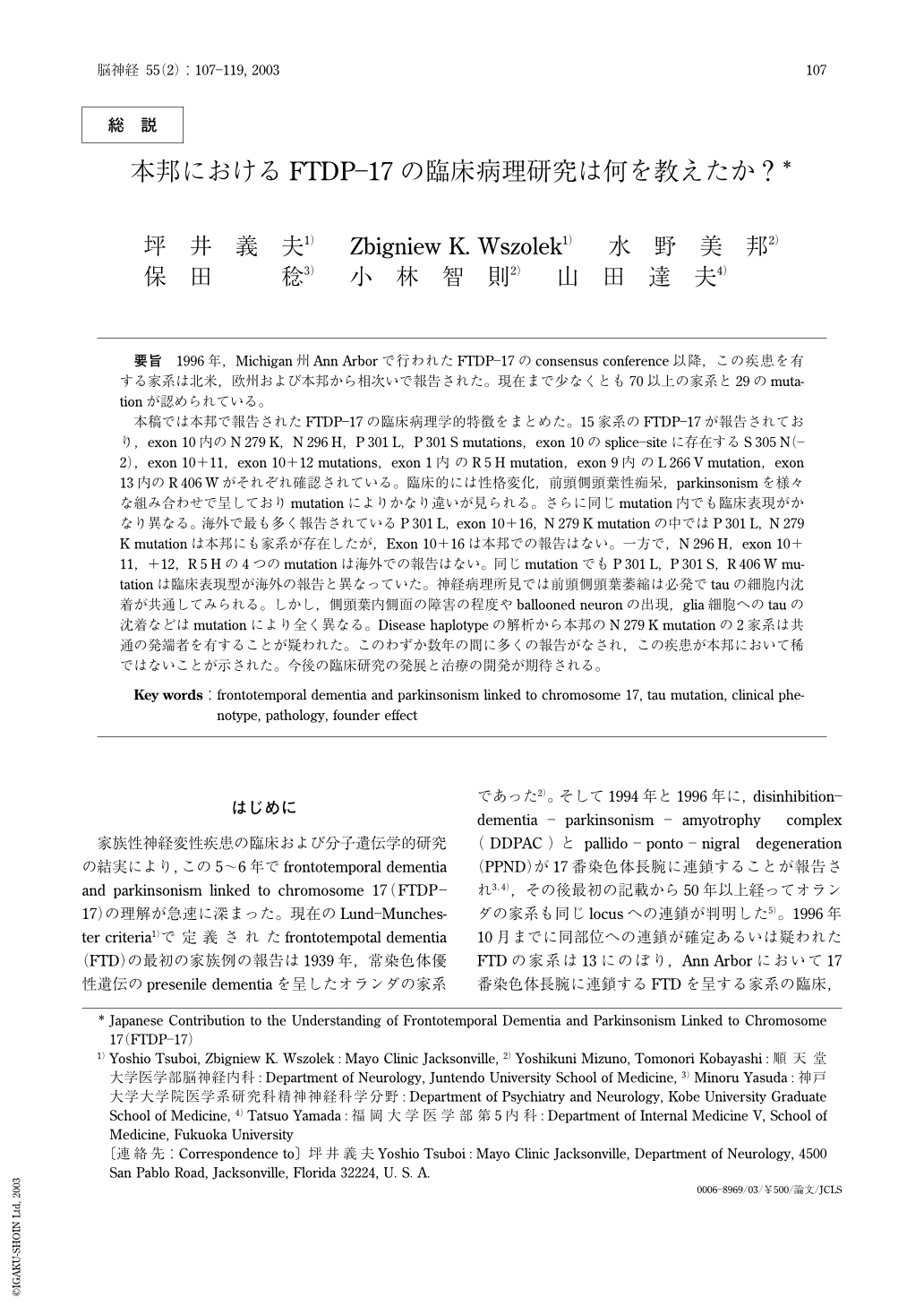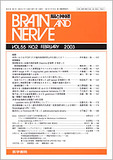Japanese
English
- 有料閲覧
- Abstract 文献概要
- 1ページ目 Look Inside
要旨 1996年,Michigan州Ann Arborで行われたFTDP-17のconsensus conference以降,この疾患を有する家系は北米,欧州および本邦から相次いで報告された。現在まで少なくとも70以上の家系と29のmutationが認められている。
本稿では本邦で報告されたFTDP-17の臨床病理学的特徴をまとめた。15家系のFTDP-17が報告されており,exon 10内のN279K,N296H,P301L,P301S mutations,exon 10のsplice-siteに存在するS305N(-2),exon 10+11,exon 10+12 mutations,exon 1内のR5H mutation,exon 9内のL266V mutation,exon 13内のR406Wがそれぞれ確認されている。臨床的には性格変化,前頭側頭葉性痴呆,parkinsonismを様々な組み合わせで呈しておりmutationによりかなり違いが見られる。さらに同じmutation内でも臨床表現がかなり異なる。海外で最も多く報告されているP301L,exon 10+16,N279K mutationの中ではP301L,N279K mutationは本邦にも家系が存在したが,Exon 10+16は本邦での報告はない。一方で,N296H,exon 10+11,+12,R5Hの4つのmutationは海外での報告はない。同じmutationでもP301L,P301S,R406W mutationは臨床表現型が海外の報告と異なっていた。神経病理所見では前頭側頭葉萎縮は必発でtauの細胞内沈着が共通してみられる。しかし,側頭葉内側面の障害の程度やballooned neuronの出現,glia細胞へのtauの沈着などはmutationにより全く異なる。Disease haplotypeの解析から本邦のN279K mutationの2家系は共通の発端者を有することが疑われた。このわずか数年の間に多くの報告がなされ,この疾患が本邦において稀ではないことが示された。今後の臨床研究の発展と治療の開発が期待される。
Since the original description of frontotemporal dementia and parkinsonism linked to chromosome 17(FTDP-17) during the Consensus Conference held in Ann Arbor, Michigan in 1996, it has become apparent that this syndrome has worldwide distribution. More than 70 families have been described in North America, Europe, Australia and Asia. The molecular genetic studies have identified 29 mutations outside and on exon 10 of tau gene. Here, we report the progress in clinical, genetic and pathological studies of FTDP-17 in Japan. There have been 15-separetely ascertained families described in Japan. These kindreds harbor following tau mutations:exon 10, exonic mutations, N279K, N296H, P301L and P301S;exon 10 5' splice-site mutations, S305N(-2), +11, and +12;exon 1, R5H mutation;exon 9, L266V mutation;and exon 13, R406W mutation. The phenotype of FTDP-17 kindreds varies significantly between families with different mutations and among the families carrying the same mutation. This variability is also seen in Japanese kindreds. Exon 10, P301L, +16 and N279K mutations are the most common but only P301L and N279K mutations have been described so far in Japan. On the other hand, R5H, N296H, +11, and +12 mutations have not been identified outside of Japan. Comparison of phenotypes of Japanese and non-Japanese families with P301S, P301L and R406W mutations uncovers significant differences in clinical presentations. It is difficult to compare pathology of Japanese and non-Japanese families on the basis of available medical literature but no apparent differences can be seen. Autopsies demonstrate the presence of neuronal and glial tau inclusions and ballooned neurons, frequently in the distribution seen in other sporadic tauopathies. A search for the common founder in Japanese families may be successfully performed. FTDP-17 families have been identified with increasing frequency in Japan. The discovery of tau mutations and the fact that they are responsible for the disease processes in the brain lead to the major advancement of our understanding of neurodegeneration. It is hoped that future studies of these families will also lead to finding the curative treatments for the tauopathies.

Copyright © 2003, Igaku-Shoin Ltd. All rights reserved.


